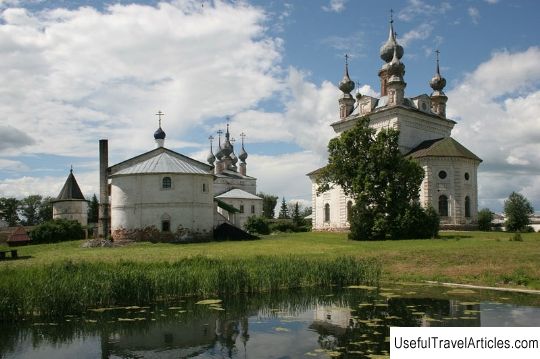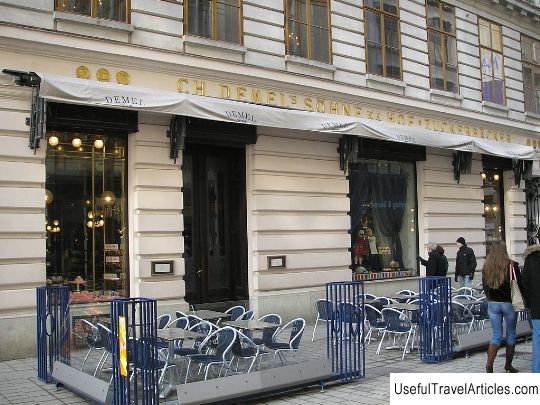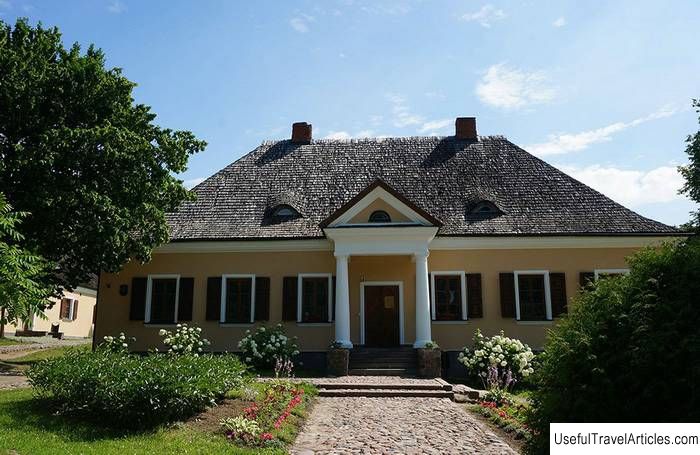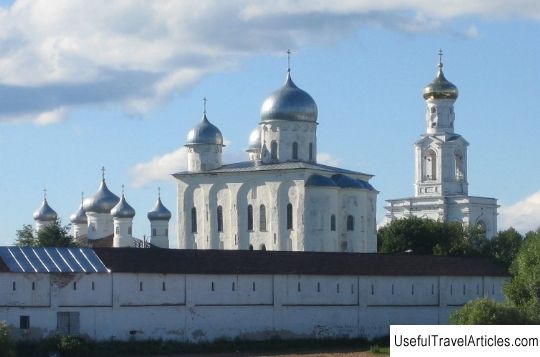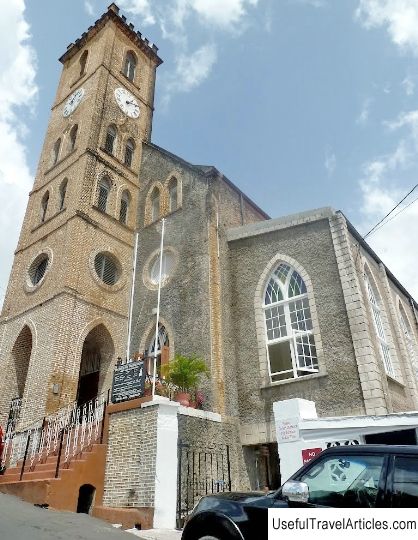St. George's Cathedral description and photos - Russia - Golden Ring: Yuryev-Polsky
Rating: 8,1/10 (2832 votes) 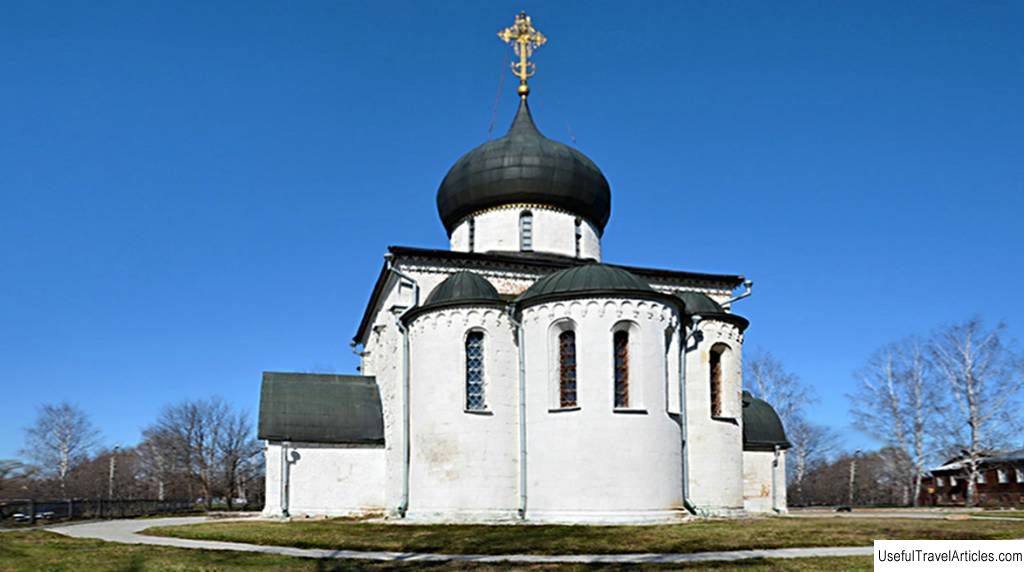
St. George's Cathedral description and photos - Russia - Golden Ring: Yuryev-Polsky. Detailed information about the attraction. Description, photos and a map showing the nearest significant objects. Photo and descriptionSt. George's Cathedral in Yuryev-Polsky is a unique monument of pre-Mongol architecture. This is an amazing example of patterned white stone carving and at the same time - a historical mystery: during the restoration of the 15th century, the stone slabs were mixed up, and now everyone can try their hand at restoring the original picture. The cathedral is now a branch of the Yuryev-Polsky Museum-Reserve. Prince Svyatoslav and his crossThe first church in the name of St. George, his patron, was installed here in 1152 by Yuri Dolgoruky at the very foundation of the city. A new stone temple was built in 1230-1234 just before the Mongol invasion. Scientists argue whether it was founded on the site of the old one and used its foundations or was just somewhere nearby. The builder was Svyatoslav Vladimirovich , Prince of Vladimir, son of Vsevolod the Big Nest. The chronicles say that he was a "master" himself. Apparently, the prince personally supervised the architects and took part in the construction of at least two cathedrals: St. George in Yuryev and the Cathedral of the Nativity of the Virgin in Suzdal. Among the decoration of the cathedral, the " cross of Svyatoslav " is distinguished - a carved white-stone cross, which was first set into the wall, and then moved inside. Some believe that it was made several years before the construction of the temple and was located nearby, then it was inserted into the wall, and only then was placed inside. On its basis, the name of Svyatoslav is indicated as the builder of the temple. This prince was buried in St. George's Cathedral. For his tomb, a separate chapel was added to the temple - Trinity. Svyatoslav was canonized. His burial place and his cross were revered by the locals as miraculous. The burial of the prince was found during the restoration in 1991 and is now located in another church of Yuriev-Polsky - in Pokrovsky. Recently, a monument to the holy prince Svyatoslav appeared in the city. It is believed that the Moscow Assumption Cathedral was built exactly on the model of the St. George Church in Yuryev-Polsky. History of the Cathedral after restoration The cathedral stood safely until the 15th century, but then the walls broke down and collapsed. On the instructions of the Grand Duke of Moscow Ivan III , the cathedral was restored, but slightly changed its appearance: pieces of stone carving were reassembled, the dome was made anew. In general, the building has become more squat and massive than initially. In the 18th century, a bell tower was added to the temple, in the 19th century, the Trinity side-chapel and a new sacristy were expanded. In 1827, the cathedral was painted again, some of these paintings have survived. It was created by a serf artel under the leadership of Timofey Medvedev - a peasant from the village of Teikovo. The murals are in an academic style: for example, The Last Supper in the altar is a copy of Leonardo da Vinci's The Last Supper. At the very end of the 19th century, against the background of a wave of interest in Old Russian architecture and the neo-Russian style that spread in architecture, ideas appeared about restoring the original appearance of the temple and clearing it of later extensions. The initiator of this was the then rector of the St. George Cathedral, Archpriest Alexander (Znamensky). He was a deputy of the State Duma from the Vladimir province, organized a sobriety society in Yuryev-Polsky. Under him, a new Trinity Church was erected next to the St. George Cathedral instead of the Trinity side-chapel. After the revolution, the abbot accepted Renovationism. Its parish existed until 1923, after which it was liquidated, and further traces of the abbot are lost. The final return of the historical appearance of the temple took place already in the 1930s after its closure. The restoration of I. Grabar and P. Baranovsky . The bell tower and the Trinity side-chapel were dismantled. The laid portal of the Trinity Cathedral has been preserved. After that, the temple was restored several times several times already in Soviet times. There are many studies devoted to this building - P. Baranovsky, for example, has been doing this for over thirty years. There are at least five different convincing reconstructions of its original appearance. One of the first belongs to the architect P. Sukhov - it was created in the 1930s, after the work of I. Grabar and P. Baranovsky. Another was created by the famous Soviet architect-restorer N. Voronin - he carried out research here already in the 1960s. The latest in time - reconstruction by S. Zagraevsky, early XXI century, using the latest research. Riddles of white stone carving At the moment, the richest white-stone carving of the temple is an incorrectly assembled puzzle from various fragments. The temple was rebuilt after the collapse in 1471 by the famous architect Vasily Ermolin . He came from a wealthy Moscow merchant class. It was he who, under Ivan III , was engaged in the renovation and restructuring of the white-stone Kremlin. Under his leadership, the Frolovskie Gates of the Moscow Kremlin were built and decorated with carvings - some researchers even believe that he was not only the head of the work, but also a sculptor and carver. In any case, this man understood well the beauty of white stone jewelry. When he received the task to restore the St. George Church, he tried not only to rebuild the walls, but to collect all the surviving fragments of the decor and, if possible, put them in their places. And that is exactly what he did not quite succeed in. V. Ermolin, apparently, had no plans or drawings of the original type of carving, and therefore the fragments had to be collected at random , guided by the size of the plates and common sense. In short, it was a real puzzle, and now in some places it is quite noticeable that it was assembled incorrectly - especially along the southern wall, from which the collapse began. Decor elements: faces, animal figures, ornaments are placed on it chaotically. The best preserved is the northern wall. Some of the white stone stones with carvings were found during excavations during the Soviet era, and they are now on display inside the church. There you can also see fragments of carving from other famous white-stone pre-Mongol cathedrals - Dmitrievsky in Vladimir and Rozhdestvensky in Suzdal, and a photo story about them. There are several different options for reconstructing the original location of all these figures. In the 19th century, it was believed that the cathedral was completely decorated with carvings; later designers believe that that only the lower belt was patterned. There are different opinions on how exactly the stone designs were made. Such works are usually not done alone, traditionally it is believed that here you can see the "handwriting" of 11 builders, but among them one can single out the "main" - the most skillful. It is believed that he was the author of the plot "The Savior Not Made by Hands" on the north wall above the entrance. There are also the remains of some kind of inscription, probably the signature of the author of the relief. The letters are most often read as "baku". Most likely, it was part of the name Habakkuk. A special feature of the temple's decor is the "carpet ornament" - all the space between the more prominently plot compositions is occupied by ornaments. The work was carried out in two stages: the main compositions were cut on separate slabs and inserted into the wall, and then this relief pattern was created along the finished wall. Carvings Carvings are somewhat similar to other carved temples of this period. They fit into the general concept of "princely" temples, which emphasize the divinity of power. Here, for example, there is a favorite medieval story - The Ascension of Alexander the Great . Legend says that once Alexander tried to fly to heaven on two huge birds, but he failed. At the same time, the figure of the great conqueror flying on birds or griffins became the image of an ideal ruler, which is often found in art in Russia and in Western Europe. The same concept is supported by an abundance of lions - symbols of power and strength. On the north front facade facing the city, St. George the Victorious is depicted as a standing armed warrior who seems to be guarding the temple and the entire city. A leopard is carved on its shield - a heraldic symbol of the Vladimir princes. On the southern facade, the main plot was "Transfiguration" - some of the stones from it are still on the facade, and some are inside, because they were not found in the 15th century. On the western wall, the "Trinity" and "Seven Heavenly Youths" are guessed. Even the fantastic beasts that adorn the cathedral are not just the product of semi-pagan fantasy. For example, the whale-race centaurs here are dressed in Russian armor and are clearly depicted as princely bodyguards. At the moment, according to researchers, the cathedral still needs restoration. Unlike, for example, the Dmitrovsky Cathedral, most of the carving of which is a copy of the 19th century, the carving of St. George's Cathedral is genuine . Soft limestone requires special conservation conditions. Now work is underway to add this temple to the UNESCO World Cultural Heritage List.         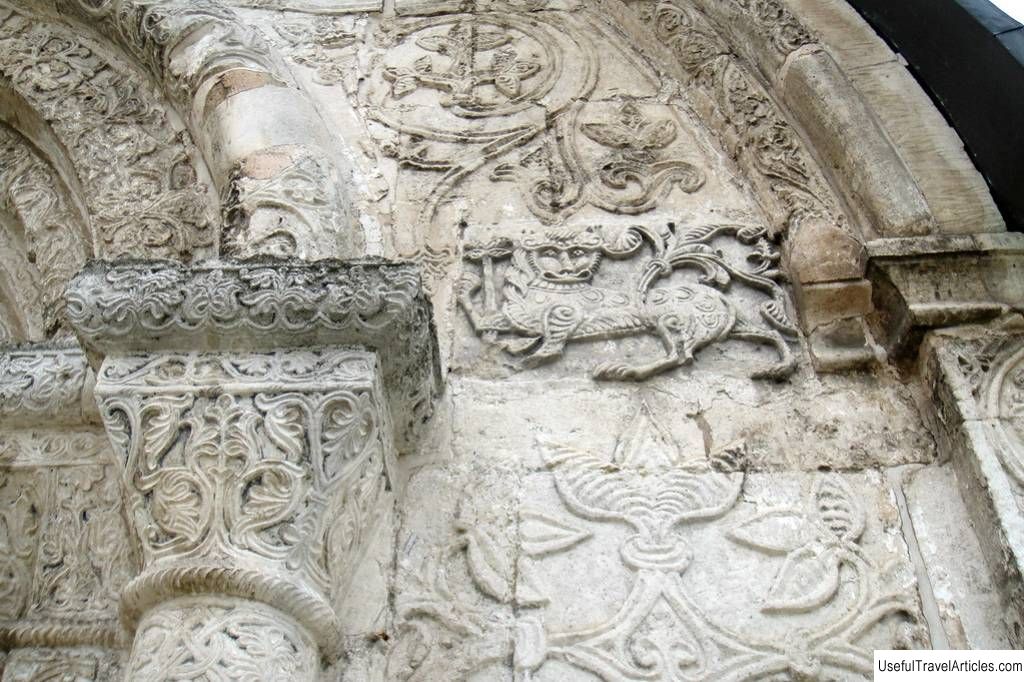  We also recommend reading The Oulu Cathedral (Oulun tuomiokirkko) description and photos - Finland: Oulu Topic: St. George's Cathedral description and photos - Russia - Golden Ring: Yuryev-Polsky. |
